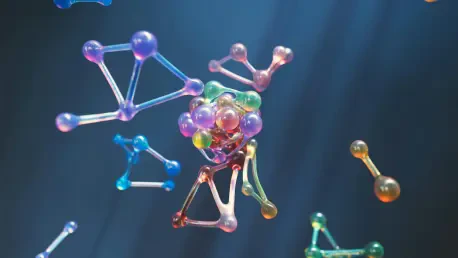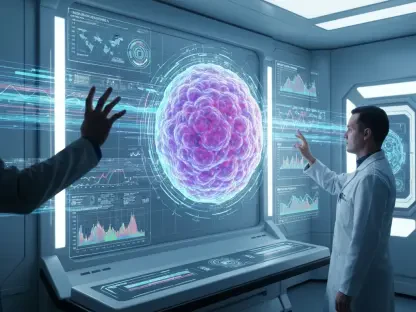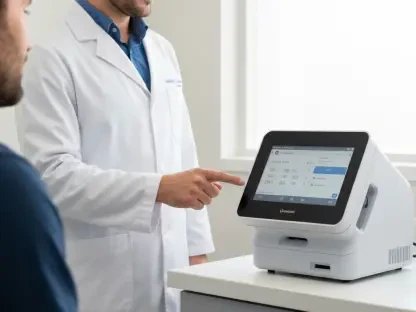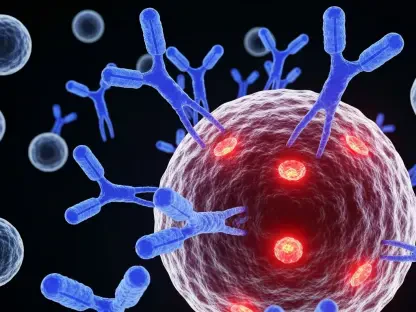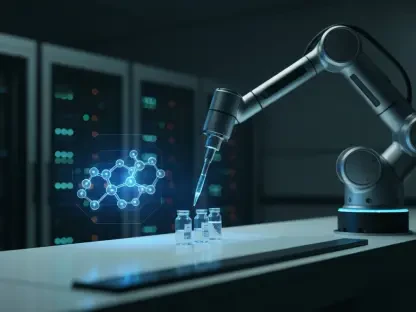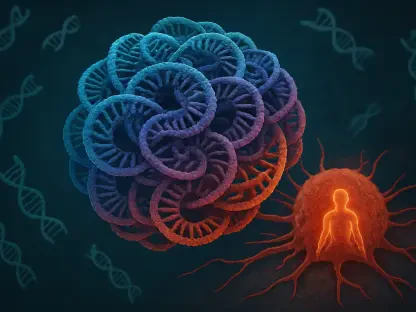Axolotls, members of the salamander family, have long fascinated scientists with their unparalleled ability to regenerate lost body limbs. This extraordinary feat is accomplished not just by regrowing tissue, but by accurately determining the correct structure to form at the site of loss. The mechanism behind this regenerative precision involves a sophisticated molecular GPS, prominently featuring the enzyme CYP26B1. This enzyme is integral in degrading retinoic acid, a compound derived from vitamin A, which serves as a crucial chemical signal for positional identity along the regenerating limb.
Understanding Retinoic Acid’s Role
Chemical Gradients and Enzyme Interactions
The process begins with the synthesis of retinoic acid, which then establishes a chemical gradient necessary for limb formation. This gradient acts as a map, enabling cells to recognize their positional directive—whether they should become part of the hand, forearm, or upper arm. Northeastern University researchers unveiled a pivotal role of CYP26B1, an enzyme that degrades retinoic acid to ensure the gradient maintains its integrity. A fascinating finding emerged when the enzyme was blocked through the use of talarozole, leading to regenerating cells misinterpreting their positional cues. This discovery underscores the enzyme’s crucial role in orchestrating the accurate regeneration of limb structures.
Additionally, retinoic acid and its degradation process are not isolated phenomena. They interact within a larger genetic framework that dictates limb development. For instance, blocking CYP26B1 disorganizes the standard chemical signal, proving how integral this enzyme is for maintaining regeneration accuracy. The meticulous balance between synthesis and degradation allows cells to interpret their environment correctly. It’s a delicate dance of chemical exchanges, ensuring that the correct structures are regrown in precisely the right positions.
Genetic Interactions and Cellular Responses
Beyond CYP26B1’s enzymatic role, the regeneration process brings into play a complex network of genes that respond uniquely to varying retinoic acid levels. Prominent among these are Meis1 and Hoxa13, which are richly involved in defining a limb’s proximal and distal structures, respectively. Meis1 primarily influences the upper arm, guiding the formation of proximal structures, while Hoxa13 is essential in the development of distal parts, such as fingers and hands. Notably, the Shox gene plays a crucial part in limb development, ensuring the upper limb bones properly mineralize; without it, bones would remain as cartilage, highlighting a critical genetic fail-safe.
The presence and activity of these genes demonstrate a highly coordinated genetic response that complements the chemical gradient set by retinoic acid. This harmony between genetics and biochemistry ensures that newly regenerated limbs incorporate not just physical tissue but functional structure as well. The interplay of these genetic elements also provides insights into potential susceptibilities or anomalies in limb regeneration, offering a framework to better understand congenital limb deformities and how they might be addressed in the future.
Applications in Human Medicine
Translational Insights and Genetic Conditions
The implications of understanding axolotl limb regeneration transcend beyond pure scientific intrigue, pointing to potential breakthroughs in human medical science. Insights gained from these salamanders could significantly impact approaches to treating and perhaps one day reversing human limb injuries or congenital defects. One promising avenue involves understanding genetic conditions akin to those dictating limb formation. As evidenced by axolotl development, human treatments might exploit similar molecular cues to encourage precise and controlled tissue repair and growth.
The key lies in understanding not just how to regrow tissues but where to place them accurately. This complex understanding of spatial awareness, akin to reading and interpreting a highly detailed architectural plan, may soon aid in the development of regenerative therapies tailored to human needs. By adopting principles observed in axolotl regeneration, medical researchers could devise therapies that replicate not only the biological regeneration of tissues but also guide these tissues to integrate seamlessly within the human body’s intricate architecture.
Future Directions and Regenerative Medicine
Looking ahead, the field of regenerative medicine stands to gain tremendously from these discoveries. The precise understanding of genetic markers and chemical gradients seen in axolotls represents a fundamental shift in approaching human regenerative capabilities. The future holds possibilities for therapies that mimic these natural processes, paving the way for breakthroughs in healing severe injuries or conditions otherwise deemed irreversible. Direct applications of this research could lead to the development of prosthetics that integrate biological elements or advance gene editing techniques to rectify developmental anomalies at the genetic level.
Continued research is essential to unlocking these promising avenues, as it requires an interdisciplinary approach blending genetics, molecular biology, and medical sciences. By harnessing insights from such model organisms, scientists can focus on crafting interventions that mimic the natural healing prowess of axolotls, potentially transforming the landscape of regenerative medicine and providing hope for conditions that are currently difficult to treat.
Embracing Nature’s Blueprint
Axolotls, fascinating members of the salamander family, have intrigued scientists for years due to their extraordinary regenerative abilities that surpass any other vertebrates. Unlike typical wound healing in humans, where scar tissue forms, axolotls can regrow lost body parts, such as limbs, organs, and even some brain regions. This incredible capability involves not merely the regrowth of tissue but also the correct formation of the structure that was lost, ensuring full restoration of function. At the heart of this precise regenerative process is an intricate molecular system often likened to a GPS. A critical player in this system is the enzyme CYP26B1, essential in breaking down retinoic acid. Retinoic acid is a vital signaling molecule derived from vitamin A, helping the axolotl’s body determine the specific positional identity of cells along the regenerating limb. By understanding such processes, scientists hope to unlock new regenerative medicine technologies for humans in the future.
